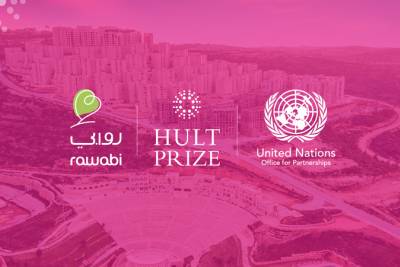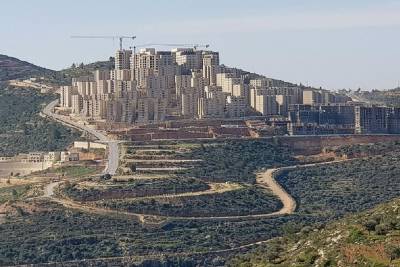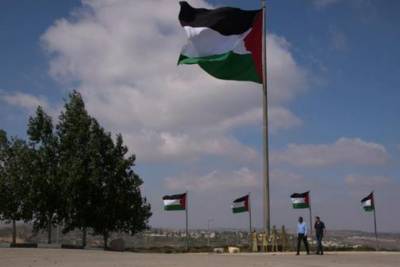Rawabi: controversial new Palestinian city
Your Middle East - Israeli Settlements have been spreading contagiously across hilltops in the West Bank. One hilltop, however, is different. Six kilometers north of Ramallah, cranes and trucks are in constant motion, but instead of the Star of David, the cranes fly the Palestinian flag. This is the construction site of the first planned Palestinian city.
Rawabi, Arabic for hills, is a project that seems impossible to skeptics and optimists alike. Even today, the fact that this is happening seems to astonish some. “Rawabi: is it real or is it a mirage?” asked BBC Arabic in a recent broadcast. But it is very real, proven by the six cameras that constantly update in real time on the development’s website.
Spearheaded by Palestinian-American businessman Bashar Masri, Rawabi stands today only about a year away from the projected first building completions. Masri’s company Massar International funds the project in partnership with the Qatari company Diar.
The planned buildings are sleek and polished; they line the hillside in perfect rows. “Rawabi is more than a place to live, it is a way of living,” says the slightly mechanical female voice behind the promotional video. Five neighborhoods surround the heart of the city, which ad campaigns promise will be a bustling commercial district.
Complete with industry, health services, schools, and a police station, there will be no need for the future inhabitants to ever leave. Rawabi is a slice of the American dream that has been placed in the middle of Palestine. Not all would agree that this is a good thing, and the project has sustained criticism from some Palestinians as well as violence from the nearby Israeli settlers.
The most salient criticism of the project is that it strengthens the Palestinian Authority, a body that grows increasingly unpopular by the day in the Occupied Territories. Rawabi is built in Area A, the rare pieces of land that are under complete PA authority. The city would fit perfectly into Prime Minister Salam Fayyad’s strategy of “ending the Occupation, despite the Occupation,” a euphemism for economic development supported with little political action.
Masri is aware of the criticism, but insists that the planned city reflects the local culture in both aesthetic and practical ways. “Just to give you a few examples, we knew that Rawabi should be structured around the traditional ‘hai’ neighborhood system that is all across places in Palestine, where neighbors know each other and can gather,” he said in an interview with Green Prophet.
“This project is not motivated by politics, it is motivated by our right to be here. It is our right to build on our land wherever we wish.” Economically speaking, it would be much more profitable for him to pursue business initiatives in other parts of the globe, but to him, “Palestine is home.”
In the projections, the hills surrounding Rawabi are significantly greener. Every year from now until completion, 15,000 indigenous trees will be planted. In some cases, trees planted by the Jewish National Fund were replaced with local flora. The entire city envisions a greener way of living. According to the developers, “Rawabi will prove that Palestinians are capable of protecting the environment, and will do so better than the residents of the settlements.”
According to Masri, finding people to live in Rawabi will not be an issue, since there are so many Palestinians crowded into the existing cities and town. Price will also not be an impediment, as the apartments have been purposefully aimed at middle class Palestinians. Mortgage plans have people paying off their loans at $500-700 a month, similar to the price of renting a flat in Ramallah.
The Palestinian economy has been crippled by strict trade restrictions, a series of military checkpoints, and ongoing segregation of their land. In this sense, Rawabi will be able to alleviate some pains. Underemployment and unemployment are two of the Palestinian economy’s most pressing issues to date. The largest private sector development to ever take place in the West Bank, the new city will create 10,000 construction jobs and 4,000 permanent jobs afterwards.
For now, the developers have their fingers crossed, hoping that politics doesn’t derail their fragile venture.
To view original article, Click Here.



